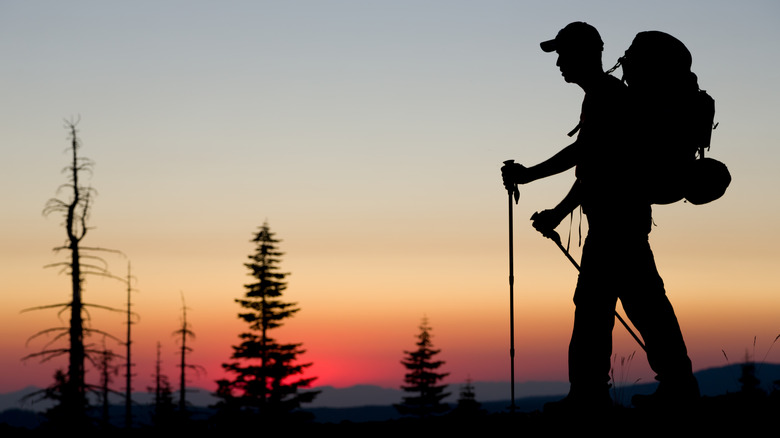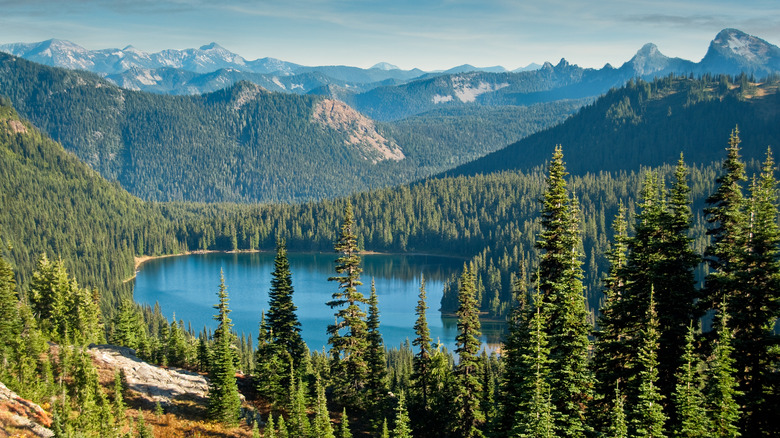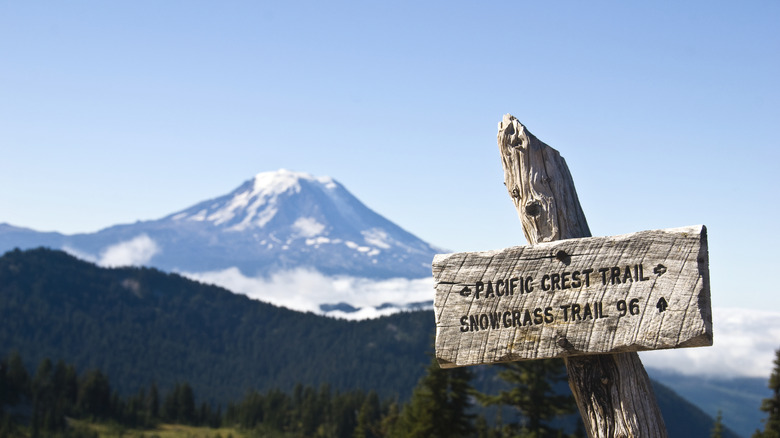The Horrifying Reasons Hikers Vanish From This Deadly West Coast Trail
For 25-year-old David O'Sullivan, the Pacific Crest Trail was a dream. He spent a full year working in his home country of Ireland to save up enough funds to travel to Campo, on the Mexican border, and thru-hike all the way to Canada. This remote route is 2,650 miles, takes most people around 5 months to complete, and leads hikers through deserts, forests, and mountain peaks, with all types of weather. Tragically, some travelers, like O'Sullivan, never make it home.
The thing that makes the Pacific Crest Trail (PCT) such an alluring journey for some is the same thing that makes it so likely for hikers to go missing: It's a very long route through the wilderness. Sometimes, hikers have to endure desert heat and mountain snow on the same day. Extreme weather conditions, wildfires, altitude sickness, stream crossings, wrong turns, sheer drops, hungry animals, suspicious and unpredictable people, and technology failures can all be extremely dangerous to hikers on the trail. On such a long route, it can be extremely hard for rescuers to find someone in danger in time — particularly if they are off the most popular trails. In some cases, they are never found.
If you fear that your loved one has gone missing on Pacific Crest Trail, call 911 immediately. You can report threats to hikers through the USDA Forest Service. For more advice, visit the Pacific Crest Trail Association, or contact them at 916-285-1846.
What happens to hikers on Pacific Crest Trail
Many hikers attempt PCT every year, and the vast majority of them survive, either completing the trail or heading to safety when something goes wrong. There are some trails that are only for experienced hikers, but on PCT, the issue is not always a lack of experience. Fifteen thru-hikers have been confirmed dead on PCT since 1983, but others seem to have simply disappeared into the wilderness, leaving nothing but last messages and abandoned backpacks behind. Hikers like 28-year-old Chris Sylvia, who vanished in 2015 the day before he was supposed to be picked up by a friend, leaving all of his hiking gear behind, and Kris Fowler, a 34-year-old hiker who had made it all the way to Washington State before going missing in 2016, remain missing, as does O'Sullivan. Their disappearances continue to haunt fellow hikers, park rangers, and their families and friends.
While we may never know exactly what happened to these lost hikers, the confirmed deaths on the trail can give us some idea. Some hikers, like Gerald Duran and Jodi Zatchick in 1983, Trevor Laher in 2020, and more in between, suffered deadly falls. Others, like Rika Morita and Chaocui Wange, who traveled all the way from Japan and China, respectively, to hike the trail, drowned in creeks and rivers they had to cross during their trek. Others have succumbed to heat stroke, and in 2022, Maddie Magee died from altitude sickness while hiking PCT.
Keeping hikers safe on the Pacific Crest Trail
It's unavoidable: If you attempt to spend five months living in the wilderness and attempting to cross the U.S. on foot, you're going to be at risk. However, there are some things you can do to make the journey a little safer. If you're planning to hike PCT starting in Mexico, then you should try to leave in mid-April to give yourself time before snow falls on the north part of the trail. Similarly, if you're leaving from Canada, you should wait until the end of June. In an interview with Hudson Library & Historical Society, Andrea Lankford, a park ranger who has dedicated herself to finding the missing hikers from PCT, warned: "For safety reasons, maybe accept that you won't be able to hike from A to B. Be willing to skip sections. You know, you can live another day and go back and hike the Sierra."
The National Park Service recommends wearing bright colors when you're out in nature so you can be easily spotted by search and rescue teams. If you're planning to hike alone, review the safety tips, always have an emergency contact at home, and make sure to check in often with friends and family. While you may have to deviate from your plan for safety, never change plans on a whim. Make sure that your family has your planned route, estimated arrival times at various towns along the way.


